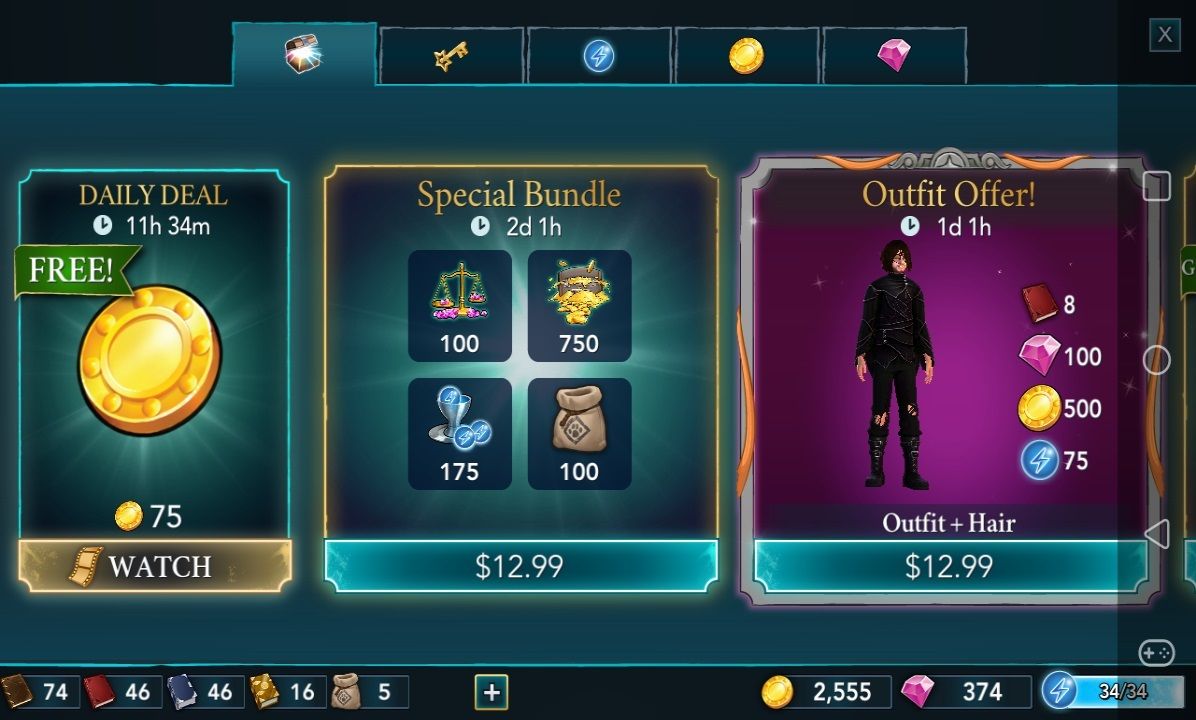If you use mobile apps, you've probably encountered in-app purchases, although you may be foggy on the terminology.
Understanding in-app purchases are important, not just for interacting with them but also for engaging in the ever-evolving discussion involving them.
What Does "In-App Purchases" Mean?
Investopedia describes in-app purchases as "the buying of goods and services from inside an application on a mobile device." While this is a good place to start from, the definition can be more nuanced based on the source and context.
For example, this definition would include dedicated retail apps like Amazon. That's not necessarily wrong, but it's also not what most people think about when they use the term.
RealSimple defines in-app purchases as "any fee (beyond the initial cost of downloading the app, if there is one) an app may ask for." That definition would include things like subscription fees.
Most of the time, when in-app purchases are being spoken of, the term refers to applications or games that allow the user to purchase exclusive add-ons or premium versions of the app.
How Do In-App Purchases Work?

How in-app purchases work also depends on the context. In most in-app purchases, the user has to enter their credit or debit card information, though some also work with sites like PayPal.
Some dedicated retail applications or platforms, like Steam and Amazon, allow you to deposit money within the platform to be spent on in-app purchases later on. In the case of Steam, money in your "Steam Wallet" can also be used on in-app purchases within games that you play through the platform.
Some apps also allow "free in-app purchases" that allow users to purchase items, upgrades, etc., by spending in-game currency that they earn by completing tasks in the game.
Who Controls In-App Purchases?
The question of who controls in-app purchases is a tricky one.
Technically, the app store offering the app has the most practical control over how the system works. Apple and Android both provide policies and best-practices regarding in-app purchases to their developer communities.
Sometimes, things get out of hand, and legislative bodies have to step in. For example, in 2014, the Federal Trade Commission announced a multi-million-dollar settlement with Apple to settle complaints of in-app purchases made by children using their parents' devices.
One need not look far for another example of apps in court. A dispute over in-app purchases lead to Apple and Google removing the popular game Fortnite from their marketplaces and the subsequent lawsuit by Epic, the maker of Fortnite.
There are also laws that pertain to some parts of in-app purchases. For example, users must enable permissions on a device before entering personal information that will be stored in the app or on the device.
Who Benefits from In-App Purchases?

Arguably, everyone benefits from in-app purchases.
App developers benefit from in-app purchases because they allow them to make more money from their apps. In-app purchases can also be a way for them to promote their own products or services. App marketplaces also benefit because they take a cut of in-app purchases even after the apps are initially sold and downloaded.
App users benefit from in-app purchases because, if they want those additional goods and services, they can quickly and efficiently access that content.
In some cases, in-app purchases also allow benevolent developers to subsidize free apps with revenue from optional subscriptions. This is the business model of the language-learning app Duolingo. They're able to offer their app for free because their platform is supported by optional subscriptions, as well as ads placed in the free version.
What's Wrong with In-App Purchases?
If everyone benefits from in-app purchases, why are they such a contentious issue?
There are a lot of reasons that, while in-app purchases do serve a purpose, they aren't always appreciated.
They Can Be Too Easy to Use
One of the issues that some mobile users have with in-app purchases is actually that they're too easy to use. As mentioned above, this is particularly a problem for parents who have to worry about their children running up bills.
They Can Be a Potential Security Issue
Most apps that support in-app purchasing require the user to input their online banking information. This information may then be stored within the app, as well as on the device itself, to speed the process along in the future.
While online banking platforms and dedicated retail apps tend to be pretty careful with how information is stored, this might not be the case with your favorite mobile game.
They Can Ruin Games
Some online and mobile gamers argue that in-app purchases create "Pay-to-Play" or "Pay-to-Win" environments in which people can get ahead by spending money instead of putting time into the game.
In some cases, in-app purchases in games are purely aesthetic items, like exclusive costumes. However, sometimes in-app purchases take the form of items or abilities that can give an advantage to players willing to put in more money.
If you hate microtransactions, here are the best free mobile games without any in-app purchases.
Why Is Everyone Talking About In-App Purchases?

While in-app purchases may seem like a niche topic, it actually draws on and plays into a huge variety of discussions.
This article has already pointed out how in-app purchases are a potential issue in security, developer relations, entertainment, and law. However, it is also a big topic in the world of cryptocurrencies. A potential major use-case for Bitcoin and other cryptocurrencies in the future involves not only online transactions but also "microtransactions."
Some of a digital item's purchase price comes from the developers' need to do things like pay their bills, maintain their equipment and make a living. Some of the digital item's purchase price comes from the need to pay a percentage of that price to the app marketplace. Some of the prices may also go to the payment platform itself.
Transaction fees on purchases mean that purchases of a small enough value aren't cost-effective. Crypto potentially solves this problem. While most people who use crypto still go through third-party payment platforms, these platforms cost less to operate than conventional banks, ideally bringing down that transaction cost.
Further, cryptocurrencies can be broken down a lot further than traditional money. So, while a full Bitcoin may be worth tens of thousands of dollars, the smallest tradable fraction of a Bitcoin (one hundred-millionth of a Bitcoin) is worth fractions of a cent.
This could open the door to less expensive in-app purchases or smaller in-app purchases. As cryptocurrency news and info site Cointelegraph put it in a 2019 article:
"With Crypto entering this space, the cost of individual transactions can be reduced quite substantially, thereby allowing developers to subsidize the cost of their peripheral content."
The Bottom Line on In-App Purchases
As our world becomes more mobile-friendly, in-app purchases are one of many structures making that world possible. While the platforms that offer them, the people that use them, and the bodies that legislate them are still hashing out the details, they don't present anything to fear.
Image Credit: kreatikar/pixabay